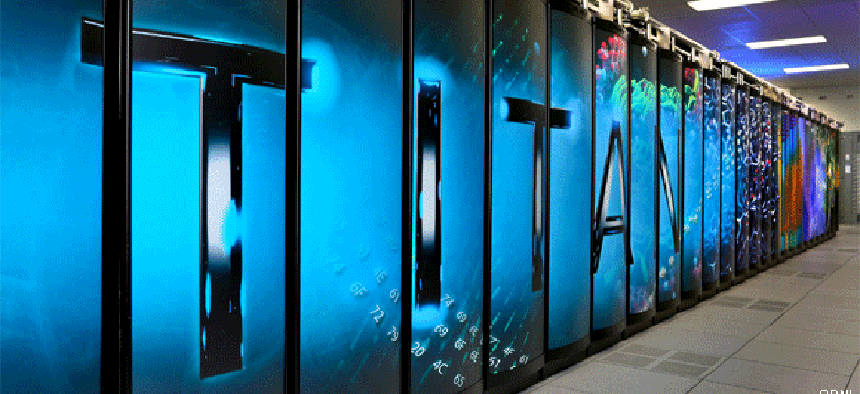Oak Ridge gets help to manage Titan's massive data stream


Connecting state and local government leaders
National lab installs smaller supercomputers whose sole purpose is to sift through the massive amount of data being generated by Titan.
When researchers at the Energy Department’s Oak Ridge National Laboratory threw the last switches on the Titan supercomputer in October 2012, they activated a machine that could calculate at 20 petaflops — 20,000 trillion calculations each second. But even then, scientists were already tweaking the design and bringing new ideas to the table to help build even faster computers in the near future.
One recent improvement, according to the Oak Ridge Leadership Council, involves installing smaller supercomputers whose sole purpose is to sift through the massive stream of data being generated by Titan.
The first is called Eos and comprises a 744-node Cray XC30 cluster with a total of 47.6 TB of memory. For the rest of this year, it will support the Innovative and Novel Computational Impact on Theory and Experiment (INCITE) program. INCITE awards time on supercomputers to researchers with large-scale, computationally intensive projects that address “grand challenges” in science and engineering.
To help with compatibility, Eos uses many of the same debuggers, profiling codes and software packages that are used on Titan.
“Eos is the newest generation of Cray architecture,” said Suzanne Parete-Koon of the Oak Ridge Leadership Computing Facility User Assistance and Outreach group in the Oak Ridge internal newsletter. “The machine initially will be used as an extra computing resource to help INCITE projects reach their goals.”
In addition to Eos, a new cluster of 196 Dell PowerEdge C600 nodes is coming online. That grouping of computers is called the Rhea cluster and will be dedicated to the post-processing analysis of visual data generated by Titan. Rhea is loaded up with programs such as ParaView and iPython designed to help process visual information.
Scientists at Oak Ridge hope that both of the new clusters, supercomputers in their own right, will help them better interpret Titan's data, and find solutions to problems posed to Titan more quickly than would be possible without the extra computing muscle .
NEXT STORY: GSA looks down the road at shared services




